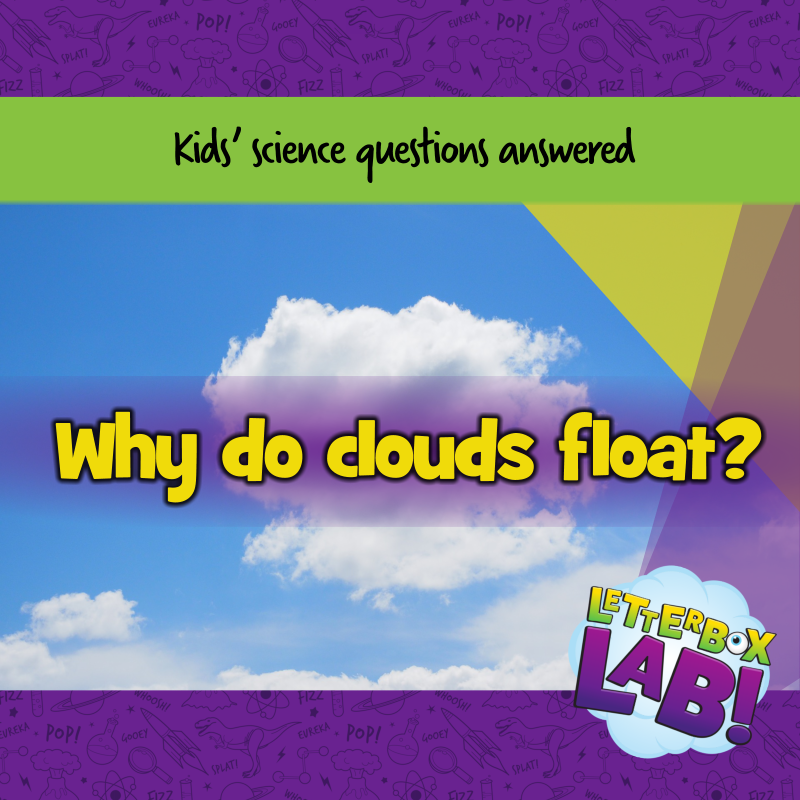Even a fairly small cloud can weigh as much as 100 elephants! So, on the average day in the UK there is thousands, even millions of elephants worth of water and ice above our heads. Obviously 100 elephants would not float, even one elephant floating is unlikely. So, it’s natural for someone to wonder “Why do clouds float?”.
Where do clouds come from?
As the Sun heats up the seas some of the water heats up and becomes an invisible gas mixed with the air. This air is warm so it rises, just like a hot air balloon it soars high. High in the sky the air is cooler and cold air cannot hold as much water as warm air. The water can no longer stay as a gas so it pops out of the air as tiny little water droplets or ice crystals if it’s very cold. A cloud is billions of these little droplets and crystals together.
Why don’t the clouds fall down?
Although the clouds themselves are very heavy the individual drops are not. It would take a thousand drops lined up to fill a millimetre. This also means that they have very little weight. The weight of each droplet is so low that friction between it and the air is almost enough to stop it falling altogether, almost. The other thing that stops the clouds from falling is, as we say above, clouds often form when warm air is rising. The rising air pushes the clouds up just enough to keep them from falling and the clouds float.
But clouds do fall sometimes?
As a cloud takes up more and more water the droplets grow bigger and get heavier. Eventually they are so big that the forces keeping them up aren’t enough any more. The drops then fall from the clouds as rain.
Would you like to spend time with your children doing something that’s fun and educational for them and hassle-free for you?
Letterbox Lab is a monthly science kit that arrives through your letterbox containing everything you need to perform incredible experiments with your children.
Your children will love it. It’s colour changing, fizzing reactons, slimes, things that glow in the dark, making helicopters and catapults. All with beautifully illustrated comic-style instructions that they will actually enjoy reading.
You’ll love it because it’s so easy. It just arrives at your house with everything you need to do all the experiments. Unlike other science kits there’s no looking in the back of cupboard for cream of tartar or figuring out where you can buy propanol on a Sunday afternoon. You just open the box and get started with ease.
Find out more about our unique series of science kits here




Add Comment